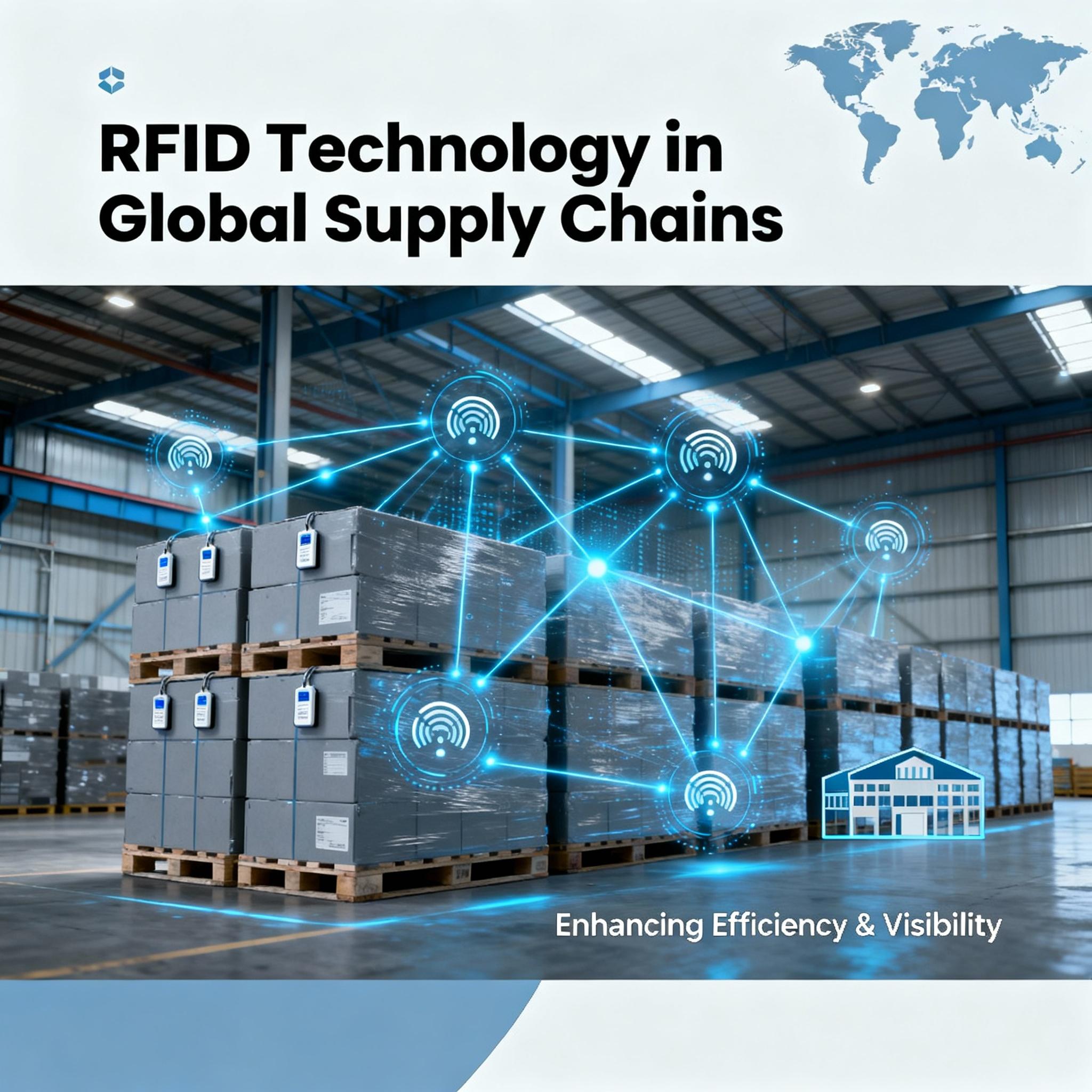RFID in Supply Chains: Building Visibility, Accuracy, and Agility

Efficient supply chains thrive on one vital capability—visibility. Every delay, misplaced pallet, or manual data error disrupts operations. That’s why more industries are turning to RFID in supply chains to gain accurate, real-time tracking from production to delivery.
By merging automation with data-driven insights, RFID transforms traditional supply chain management from reactive to predictive, making it faster, leaner, and more reliable.
Why RFID in Supply Chains Matters Today
Global supply chains have become more complex than ever. Manufacturers manage materials across continents while meeting sustainability and regulatory requirements. Yet, manual or barcode-based systems still lead to bottlenecks, blind spots, and costly inefficiencies.
RFID (Radio Frequency Identification) changes this by automatically capturing data stored on tags attached to items, pallets, or containers. Each tag has a unique identifier that can be read remotely. Unlike barcodes, RFID does not require direct line-of-sight; however, read range and reliability depend on tag type (LF/HF/UHF), placement, and environment. The result is a live digital map of inventory and assets across the supply chain.
Enterprises from automotive to retail are turning to RFID asset tracking solutions to boost traceability, eliminate errors, and improve decision making.
How RFID Improves Traceability and Efficiency
RFID makes supply chain traceability precise and continuous. RFID tags are scanned automatically as goods move through checkpoints, sending details to warehouse systems and enterprise resource planning (ERP) dashboards.
Here’s how RFID drives superior efficiency:
- Real-time tracking: Every tagged item’s location, movement, and condition are monitored instantly.
- Error-free data capture: Human entry or barcode scanning mistakes are eliminated.
- Batch-level traceability: Products can be traced back to their origin in seconds, enabling faster recalls.
- Improved lead time: Automated tracking accelerates receiving, picking, and shipping operations.
For manufacturers, RFID ensures each product’s lifecycle, from raw material to finished good, is fully visible. This transparency reduces loss, prevents counterfeiting, and supports compliance across global standards.
RFID in Action Across Industries
Leading companies have adopted RFID in supply chains to enhance agility and quality control. In fast-moving sectors such as fashion and food services, real-time tracking allows quick responses to demand changes or safety concerns.
- Manufacturing: RFID tags track components through assembly lines, detecting delays or deviations early.
- Retail: RFID enables instant inventory audits, better shelf accuracy, and smoother omnichannel fulfillment.
- Healthcare: Hospitals track critical equipment and pharmaceuticals, reducing shortages and theft.
- Food logistics: RFID plus IoT sensors or sensor-enabled tags can provide temperature, humidity, and freshness data.
Each of these sectors shares a goal—reduce uncertainty and improve responsiveness. RFID achieves that by connecting every process point through automated visibility.
RFID in Supply Chains vs Traditional Tracking
|
Aspect |
Traditional Barcoding |
RFID in Supply Chains |
|
Data capture |
Requires line of sight and manual scanning |
Captures data automatically and remotely |
|
Accuracy |
Prone to human error |
Large accuracy gains (in many deployments approaching near-100% with correct design) |
|
Speed |
Slow batch processing |
Instant multi-tag scanning |
|
Traceability |
Limited after dispatch |
Continuous traceability from manufacturing to customer |
|
Scalability |
Hard to integrate globally |
Scales across suppliers and locations when standards and governance are in place |
RFID thus shifts supply chain performance from operational oversight to full predictive insight.
Integrating RFID with Emerging Technologies
The latest breakthroughs in RFID come from integration with advanced digital tools.
- IoT and sensors: Combine RFID with IoT for monitoring environmental conditions, movement speed, and product state.
- AI and analytics: Use RFID-generated data for forecasting demand, optimizing storage, and detecting inefficiencies.
- Location tech: Use GPS or cellular/GNSS trackers for outdoor shipments and BLE/RTLS for indoor positioning where needed.
This combined ecosystem transforms RFID from a tracking tool into a supply chain intelligence platform.
Overcoming Implementation Challenges
Despite its potential, adopting RFID requires planning. Upfront costs for readers, antennas, and integration can concern smaller firms. Data management complexity and supplier cooperation also affect system efficiency.
However, as RFID in supply chains becomes more standardized, costs continue to fall. Cloud-based platforms simplify deployment, allowing even small enterprises to benefit from automated visibility and analytics. Interoperability improvements now enable RFID systems to communicate easily with warehouse management systems and ERPs.
Measurable Gains from RFID Adoption
Organizations that have implemented RFID report major efficiency gains:
- Greater than 25% improvement in inventory accuracy (reported in many deployments)
- 10% - 15% reduction in labor hours for stocktaking and order picking
- Notable decrease in losses from misplacement
- Significant waste reduction through real-time expiry tracking
Such performance enhancements make RFID not just an operational upgrade but a competitive differentiator.
Results vary by industry and implementation. Outcomes depend on what level you tag (item, case, pallet), reader placement and density, whether you redesign inventory processes, and how well the system integrates with ERP/WMS and staff workflows. The percentages above are reported from deployments and pilots; actual gains will depend on your baseline performance and rollout scale.
The Future of RFID in Supply Chains
Supply chains are evolving into intelligent, self-correcting systems driven by data. RFID is at the foundation of this transformation. It acts as a real-time data bridge between the physical and digital worlds, enabling businesses to react faster, operate smarter, and maintain trust with customers.
From factories to retail shelves, adopting RFID in supply chains is no longer optional. It is a strategic move toward efficiency, accuracy, and resilience. As industries worldwide seek transparency and agility, RFID stands as the technology that turns complex supply networks into cohesive, intelligent ecosystems.
- Art
- Causes
- Crafts
- Dance
- Drinks
- Film
- Fitness
- Food
- Игры
- Gardening
- Health
- Главная
- Literature
- Music
- Networking
- Другое
- Party
- Religion
- Shopping
- Sports
- Theater
- Wellness



